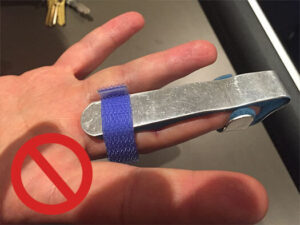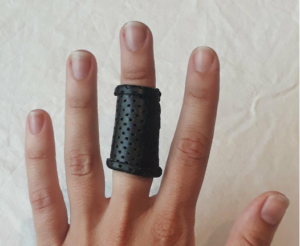•Within 24 hours
•Urgent care required
Suggestion: X-ray or Ultrasound
•Thermoplastic waterproof orthoses
•6 weeks full time wear
•ROM of DIPJ in particular
An aluminium splint that holds the finger in extension but does not allow range of the finger tip and stretching of the lateral bands.

A custom made, functional, light weight, water proof, thermoplastic barrel splint with the finger tip left free to mobilise and stretch the lateral bands and the ORL.

Central slip injury, fixed flexion, Boutonniere deformity is caused by an avulsion or rupture of the central tendon in the finger. A forced bend or trauma to the finger can cause the Central slip to rupture.
Central Slip injury is very common in ball sports but can be misdiagnosed as a finger dislocation so proper assessment is required.
If Central Slip injury is treated early then it can be prevented from becoming a fixed flexion deformity. Splinting normally requires six weeks, then a range of motion and strengthening program can begin.
Generally no. Surgery is a last resort but again it is important to be assessed early. In the rare cases where surgery is required your hand therapist at Action Rehab The Hands Physio can refer you to the appropriate surgeon to have your Central Slip repaired.
If left untreated a Central Slip injury can become a fixed flexion deformity which can then develop into a Boutonniere deformity that can be very difficult to treat. These conditions can be functionally limiting and may require corrective surgery.